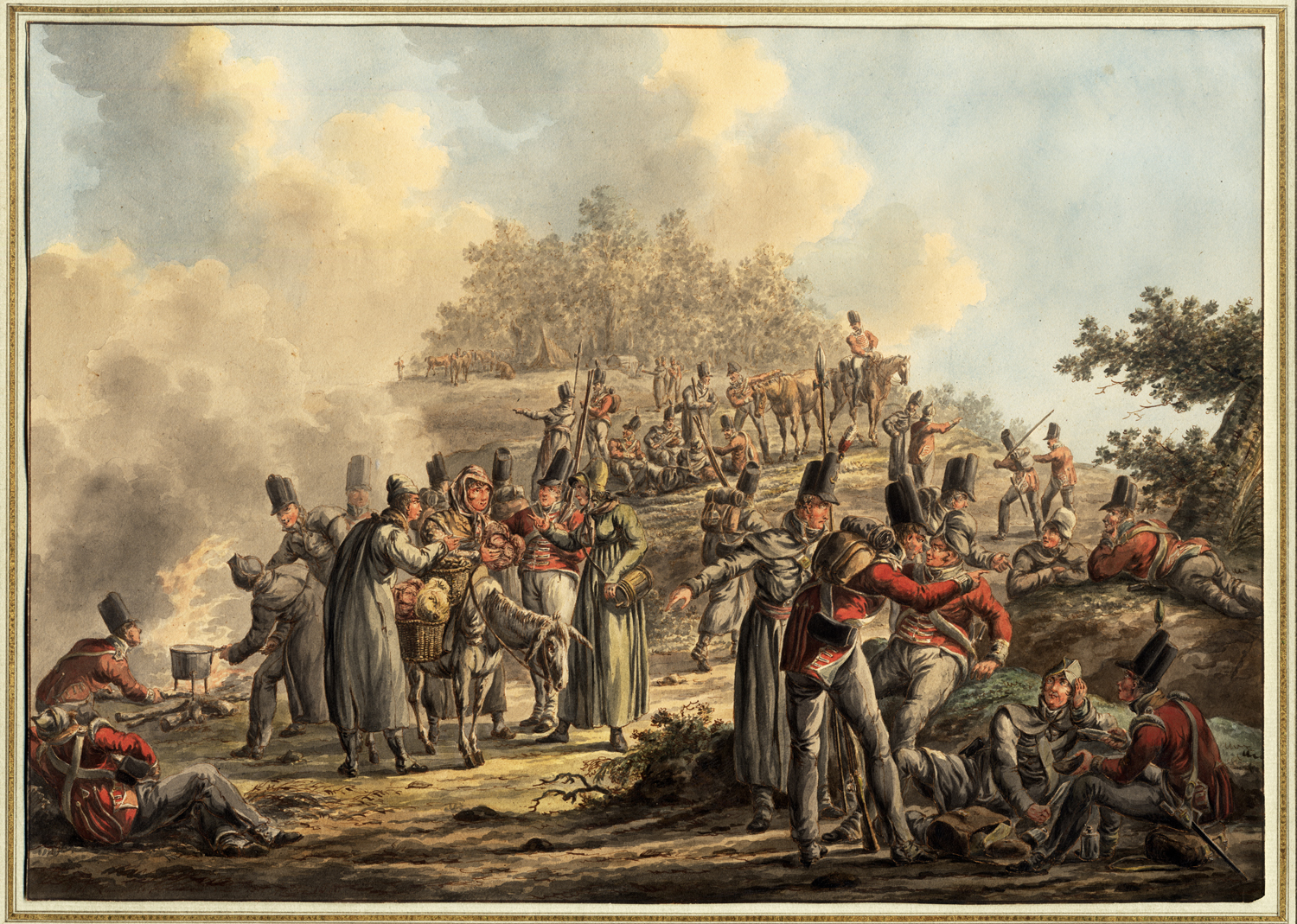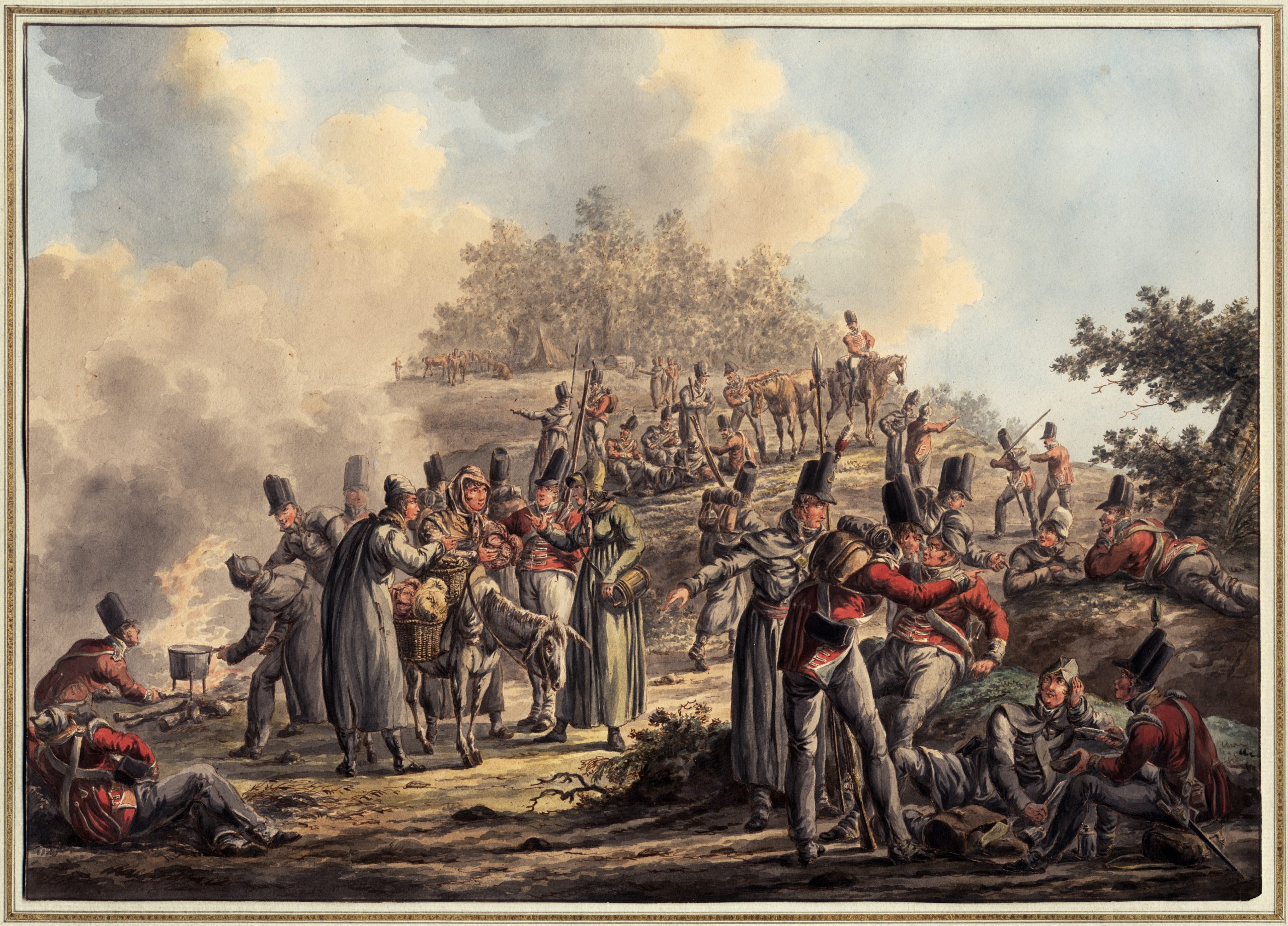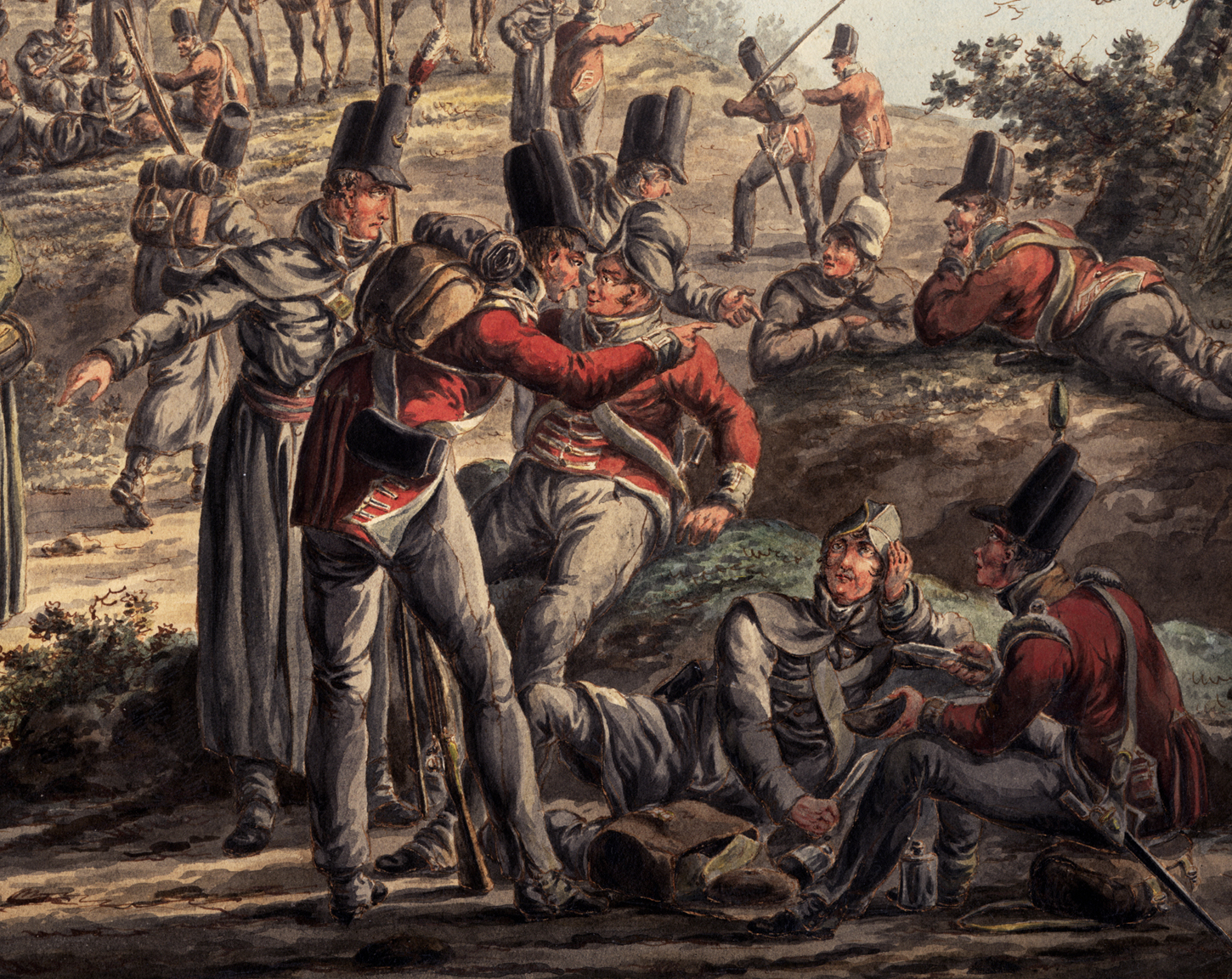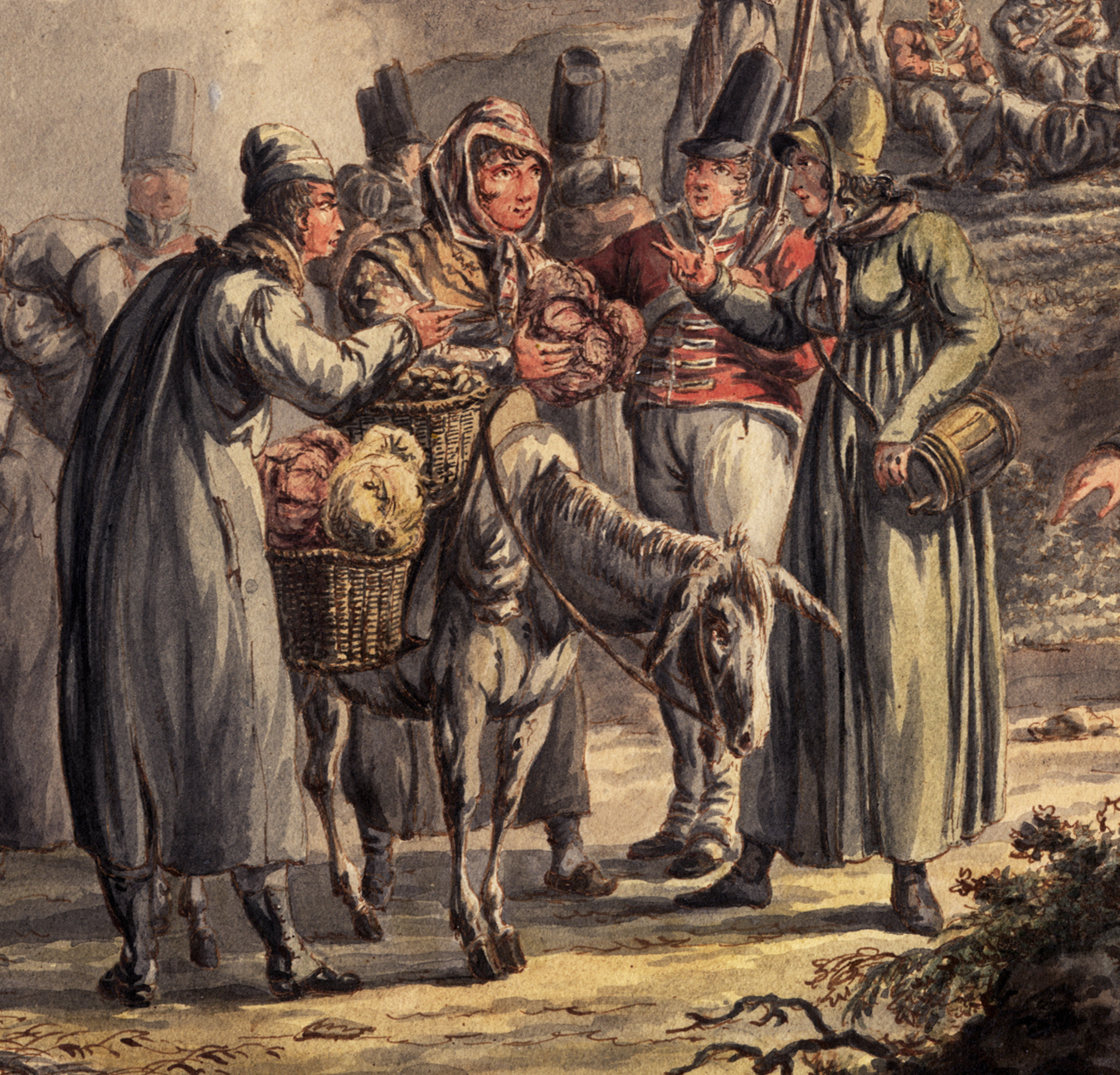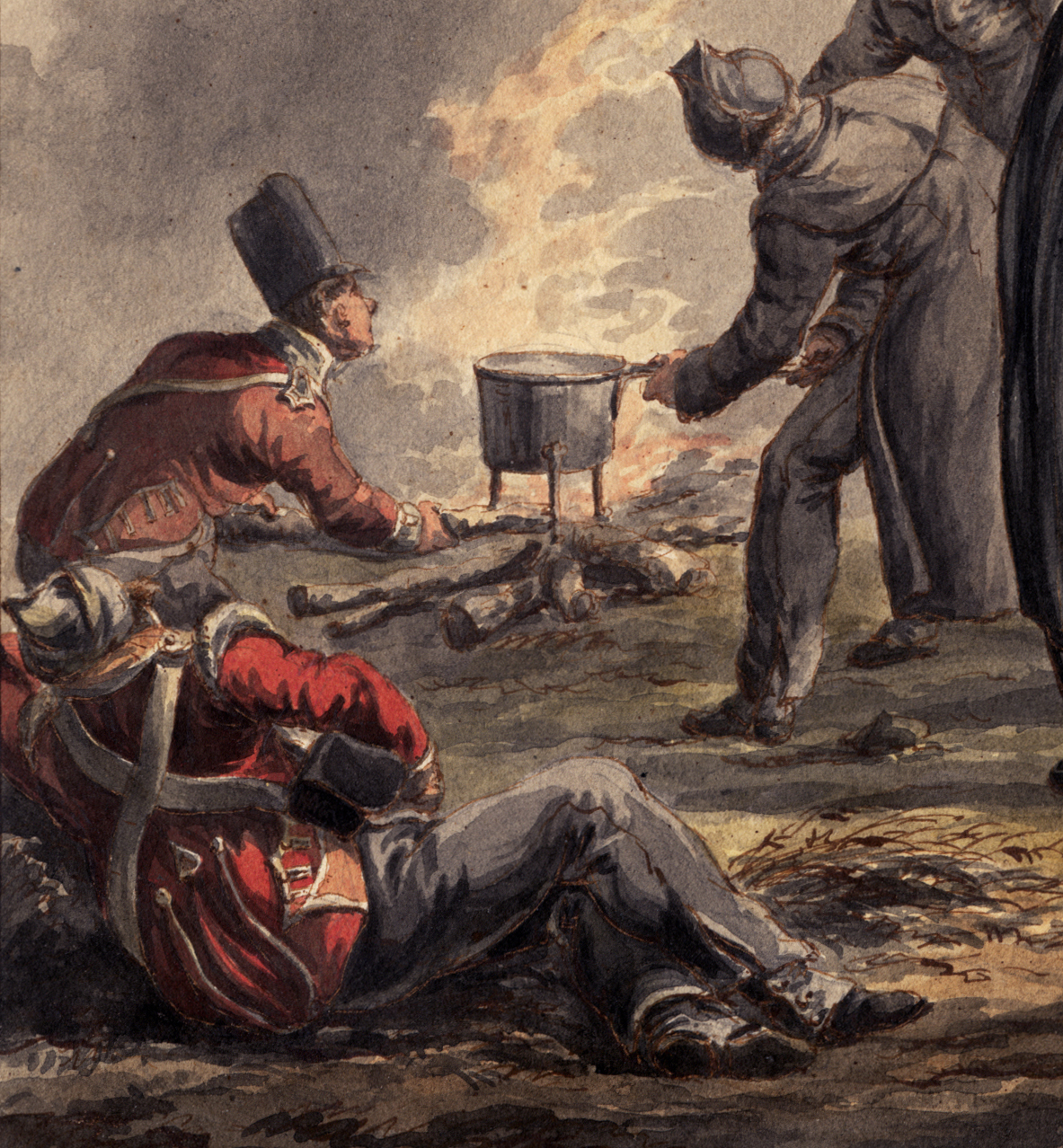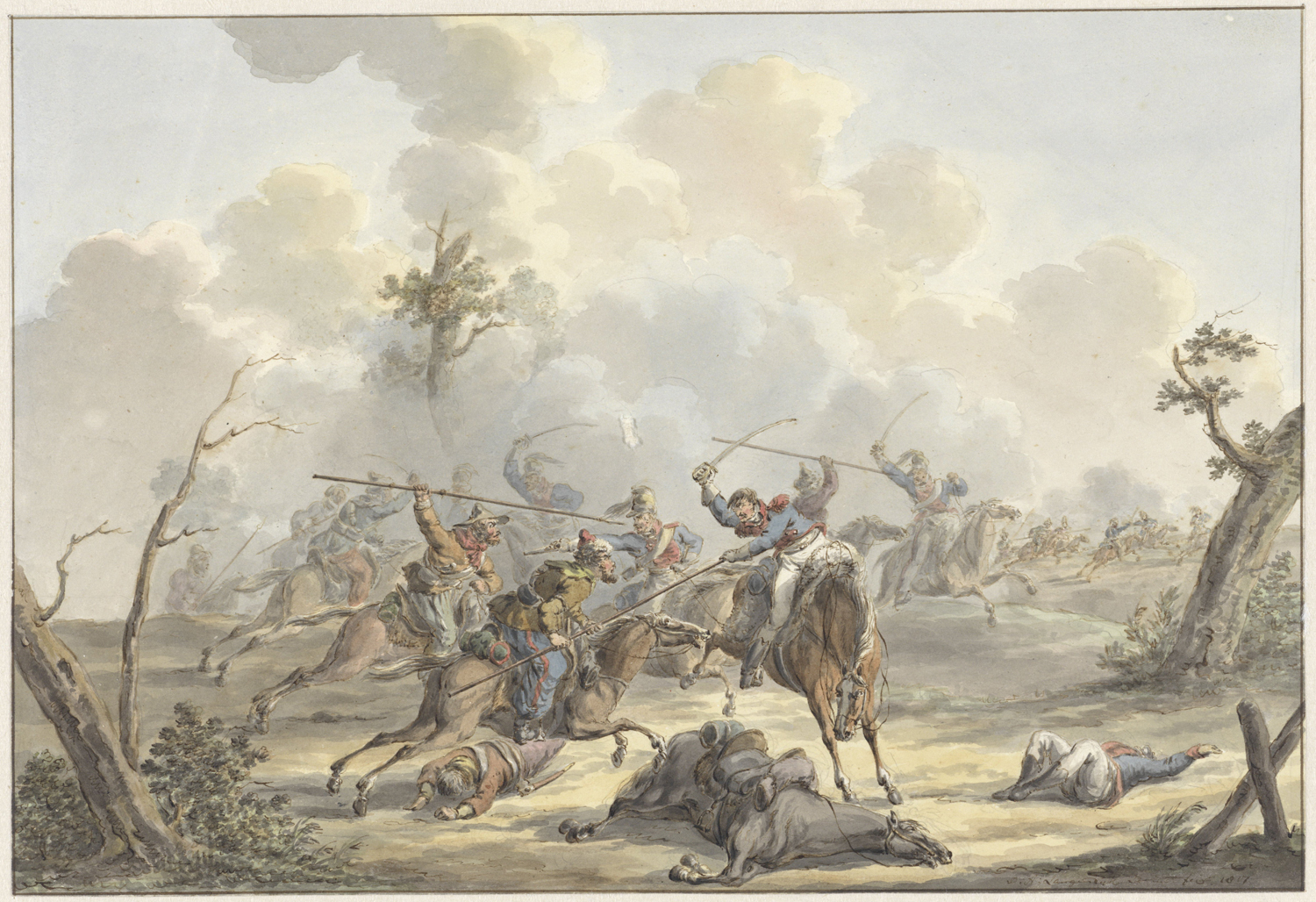JAN ANTHONIE LANGENDIJK (Rotterdam 1780 – 1818 Amsterdam)
Jan Anthonie Langendijk (Rotterdam 1780 – 1818 Amsterdam)
A Bivouac of British Infantry in the Southern Netherlands
Watercolour, brown ink framing lines, 282 x 394 mm (11.1 x 15.5 inch)
Signed ‘J:A: Langendijk’ (pen and brown ink, lower left)
Provenance
- Anonymous sale, Christie’s, Amsterdam, 16 November 2005, lot 311, repr.
- Private collection, the Netherlands
***
Jan Anthonie Langendijk, together with his father Dirk (1748–1805), are regarded as the most reliable and important painters of military scenes from the French Revolutionary and Napolonic Wars.1 Their stilistic characteristics are extremely similar, they had a virtually identical ‘hand’, although Dirk is generally considered the more accomplished draughtsman.2 It is known that Jan Anthonie completed a number of unfinished paintings by his father after the latter’s death in 1805. Jan Anthonie was taught by his father, and lived in Rotterdam, Amsterdam, Brussels and The Hague, finally settling in Amsterdam. He married Johanna Catharina van Everen in 1809, after having co-habitated with her for some time.
Jan Anthonie and Dirk are most famous for their work ad vivum, drawn ‘from the life’, of the French armies entering the Dutch Republic in 1794, and the resulting wars. Father and son followed the armies and the major battles, resulting in the Battle of Waterloo in 1815 during which Napoleon was defeated, and executed many very lively battle scenes. Jan Anthonie depicted many of the key historical events of his day, such as the entry of Louis Napoleon in Amsterdam on 20 April 1808 (Rijksmuseum, Amsterdam).
This superb watercolour shows British infantry soldiers, who fought on foot, making up camp for the night. The artist has shown soldiers sitting and lying down after a long day’s march, food being prepared, a pot heated over a campire, and soldiers purchasing vegetables from a travelling saleswoman on a donkey. Langendijk has depicted soldiers from at least two regiments, distinguished by the colours of their collars. Some soldiers are wearing grey overcoats to protect themselves from the drafty weather in modern-day Belgium. The gesticulating man in the grey overcoat behind the man wearing a small backpack with provisions in the foreground is identified as an officer by the ornament on his headwear, and the sash around his waist. The British infantry typically fought with pikes during this period, which are faithfully rendered in this watercolour. It has been suggested that Langendijk executed this scene around the time of the Battle of Waterloo in 1815, when British troops were in these regions.3>
Our colourful and amusing drawing can be compared to Langendijk’s Cavalry Skirmish of 1817 in the Rijksmuseum, Amsterdam (see fig.).4 King George IV collected a large group of some five hundred drawings and watercolours by Dirk and Jan Antonie Langendijk, still preserved in the Royal Collection at Windsor Castle.5 Because his work was so favoured by contemporary collectors such as the English monarch, few of Jan Anthonie’s works are available on the market now.
SOLD TO BROWN UNIVERSITY LIBRARY (ANNE S.K. BROWN MILITARY COLLECTION), USA
1. For the artist, see H.C. Hazewinkel, ‘Dirk en Jan Anthonie Langendijk en Christoffel Meijer’, Rotterdams Jaarboekje 1955, pp. 121-42; J. Hilkhuijsen, ‘J.A.Langendijk (1780-1818), Bloemen kopende infanterist,1816’, Armamentaria 2005/06, no. 40, pp. 242-44.
2. For Dirk Langendijk, see: M.E. Deelen et al., Dirk Langendijk (1748-1805): tekenaar tussen kruitdamp en vaderlands gevoel, Rotterdam 1982.
3. I am extremely grateful to Dr Louis Sloos of the Nationaal Militair Museum (National Military Museum), Soest, for providing information about this sheet in an email of 20 April 2015.
4. Pen and brown ink, watercolour, graphite, 213 x 310 mm, inv. no. RP-T-1921-154.
5. See A.E. Haswell Miller and N.P. Dawnay, Military Drawings and Paintings in the Collection of Her Majesty The Queen, London 1970, nos 1239 ff.
